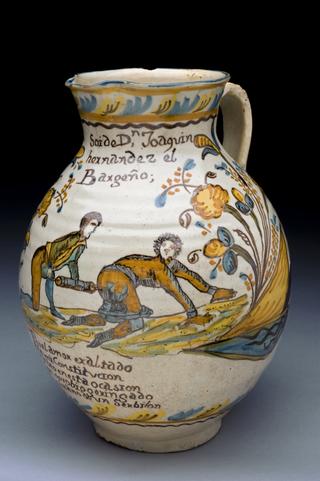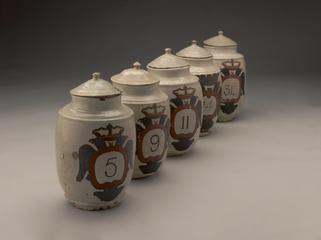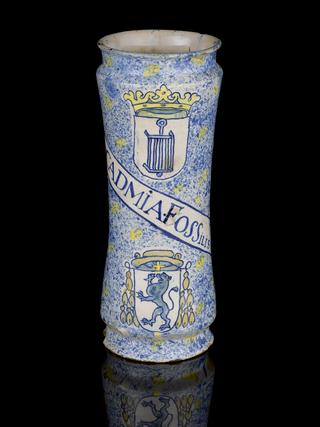




Tin-glazed earthenware drug jar, monochrome decoration with "pipe-smoking man" design, labelled "CARYOCOSTIN", 1650-1670
Caryocostin was a medicinal preparation made from a number of plants such as costus root, scammony and cloves – each of these plant names had a number of alternatives that could be used interchangeably.
Caryocostin was used in the treatment of diseases such as gout and those that were thought to be caused by an excess of bile. Drug jars featured a number of different motifs which can be used to help date them. This motif is one of the earliest examples in English design where the name of the drug is painted on to the jar.
Details
- Category:
- Medical Ceramic-ware
- Collection:
- Sir Henry Wellcome's Museum Collection
- Object Number:
- A20640
- Materials:
- earthenware, tin-glazed
- Measurements:
-
overall: 180 mm 137 mm, .76kg
- type:
- drug jar
- credit:
- On loan from the Wellcome Trust


